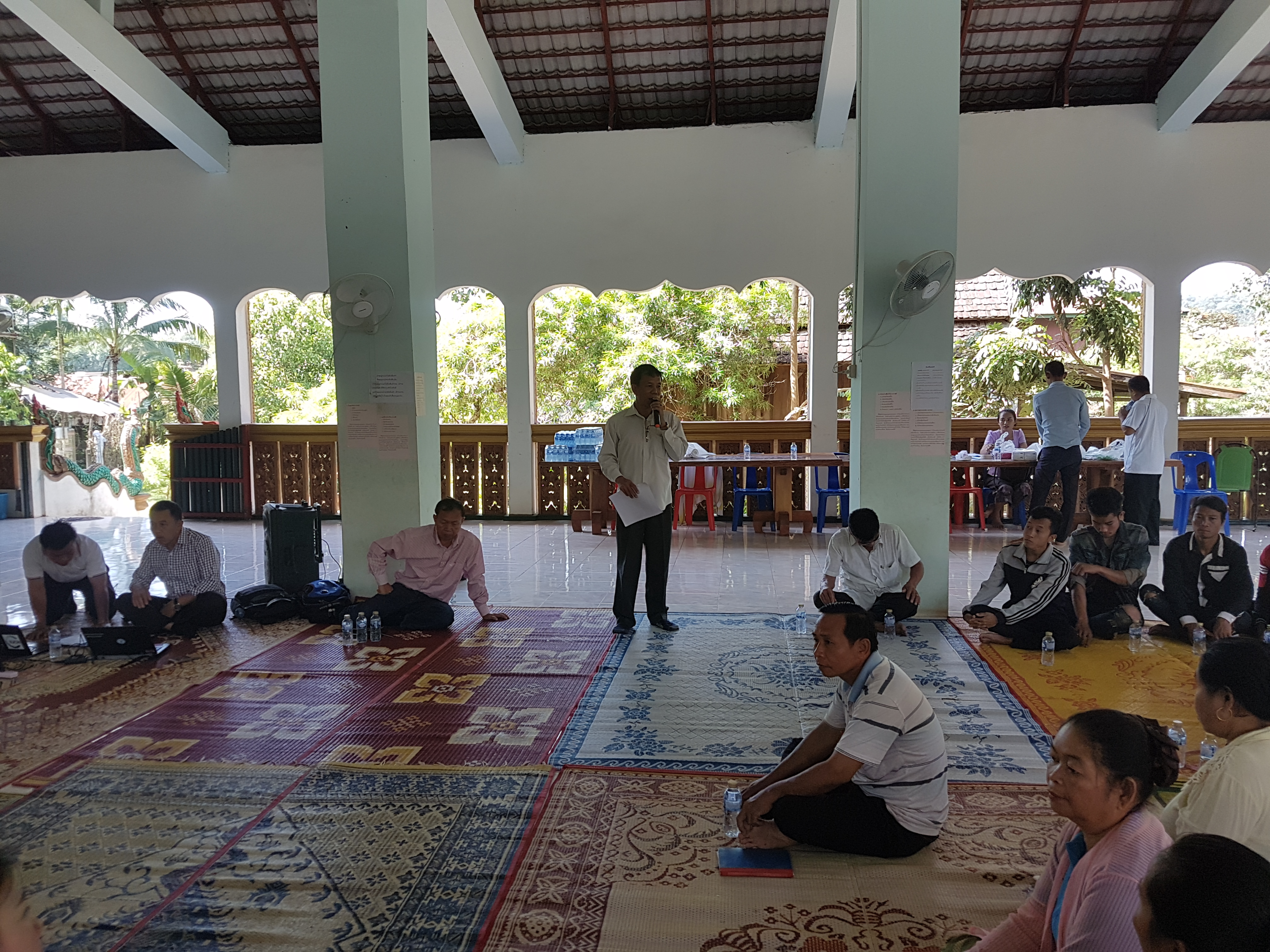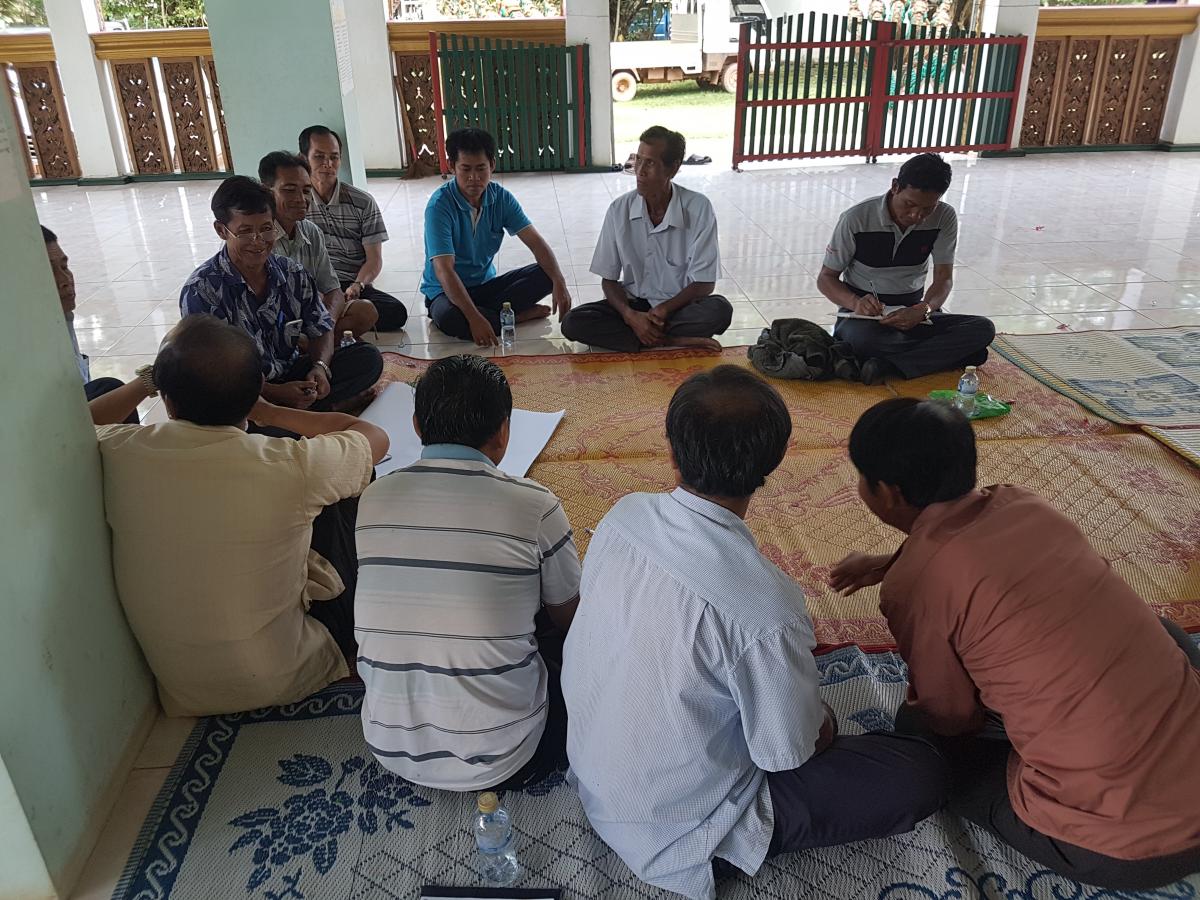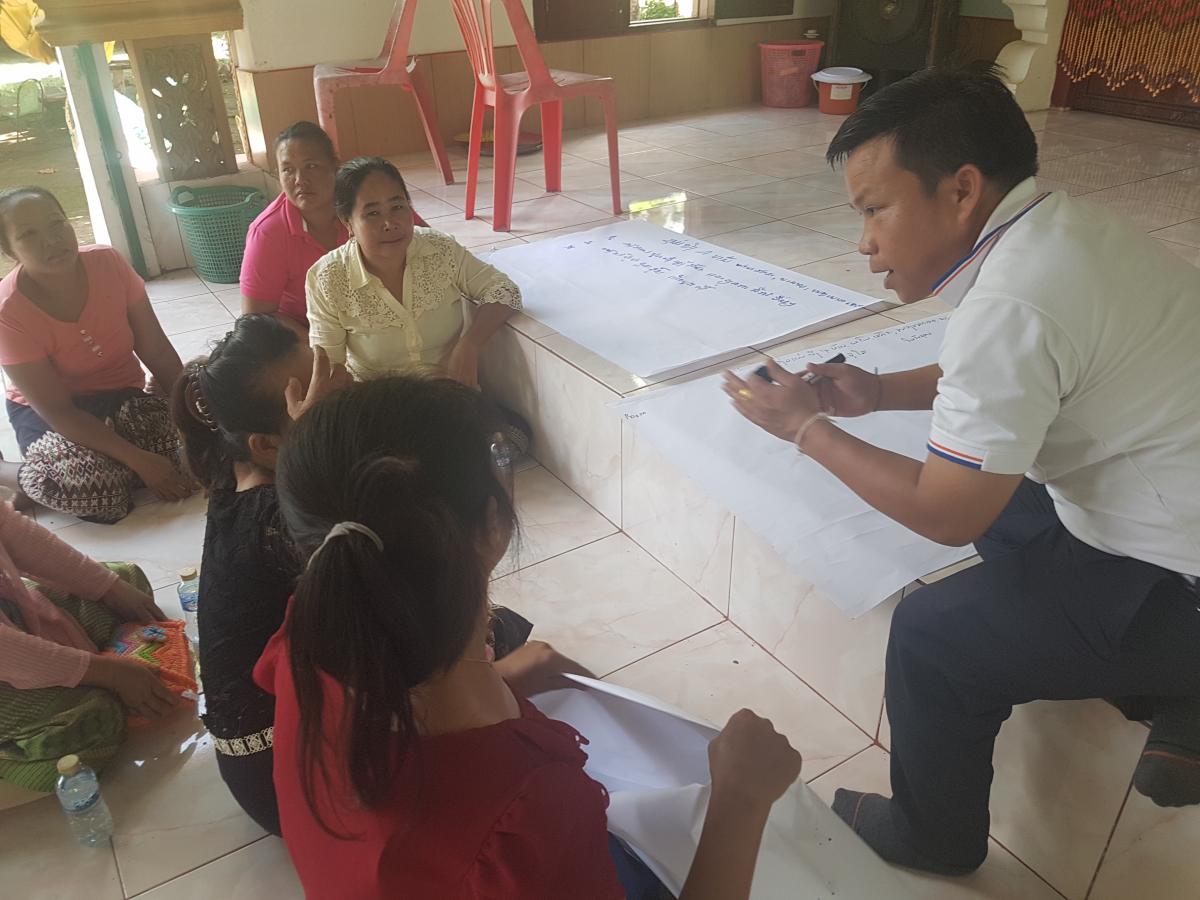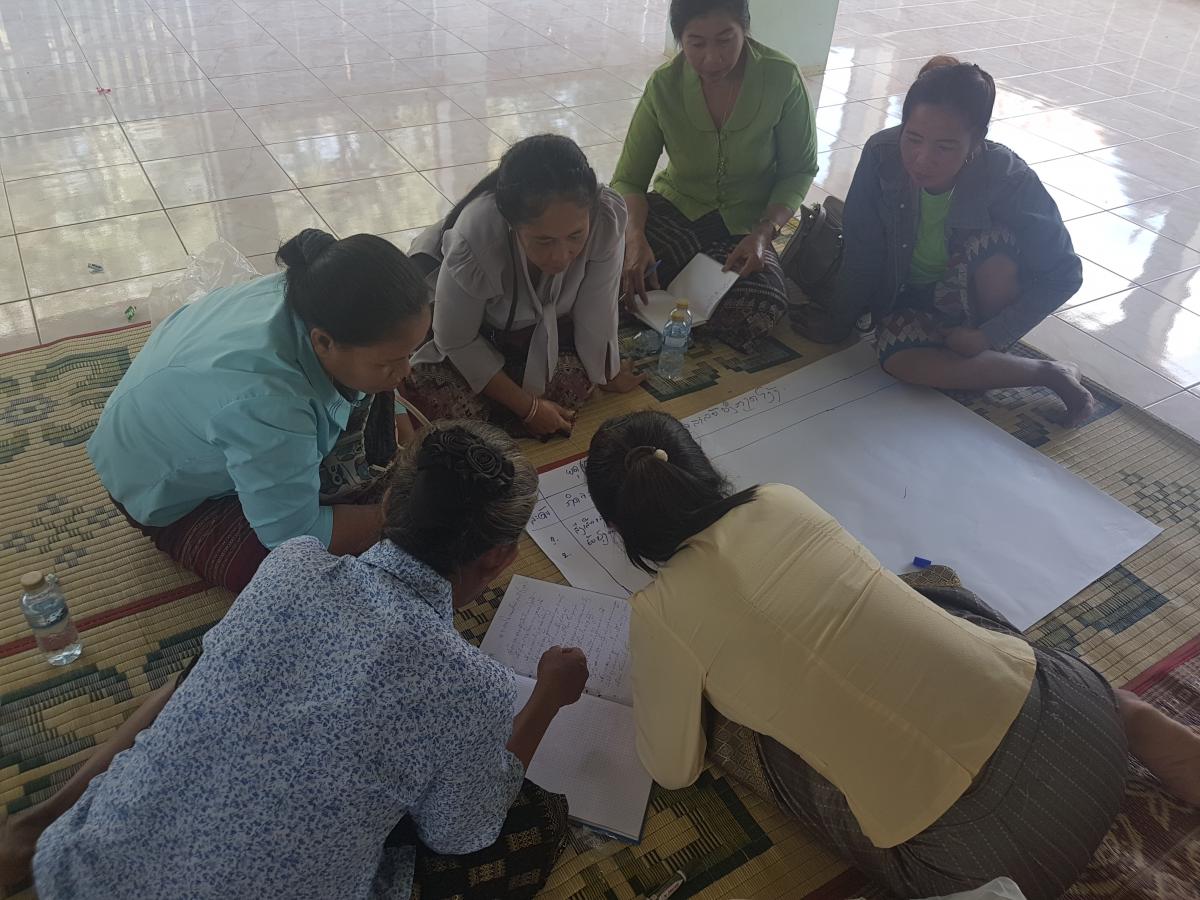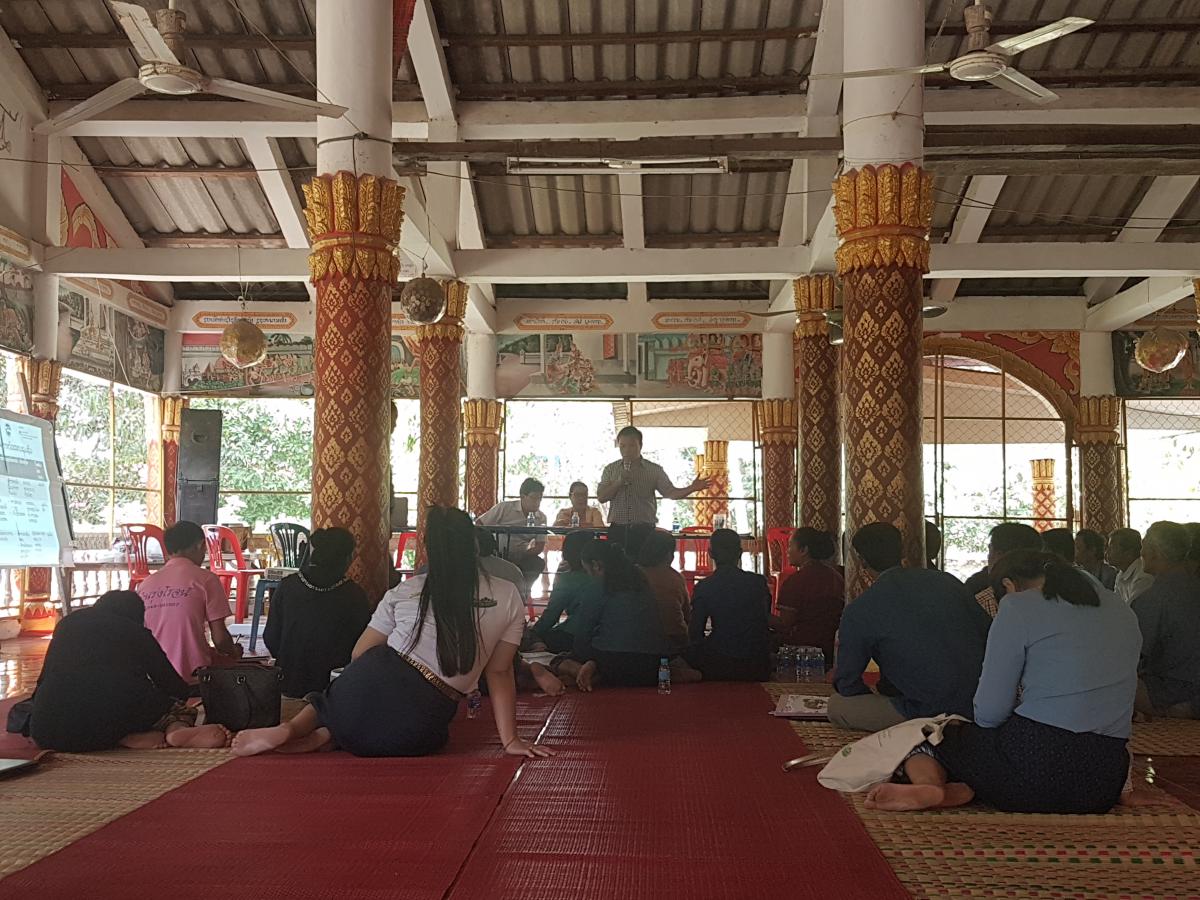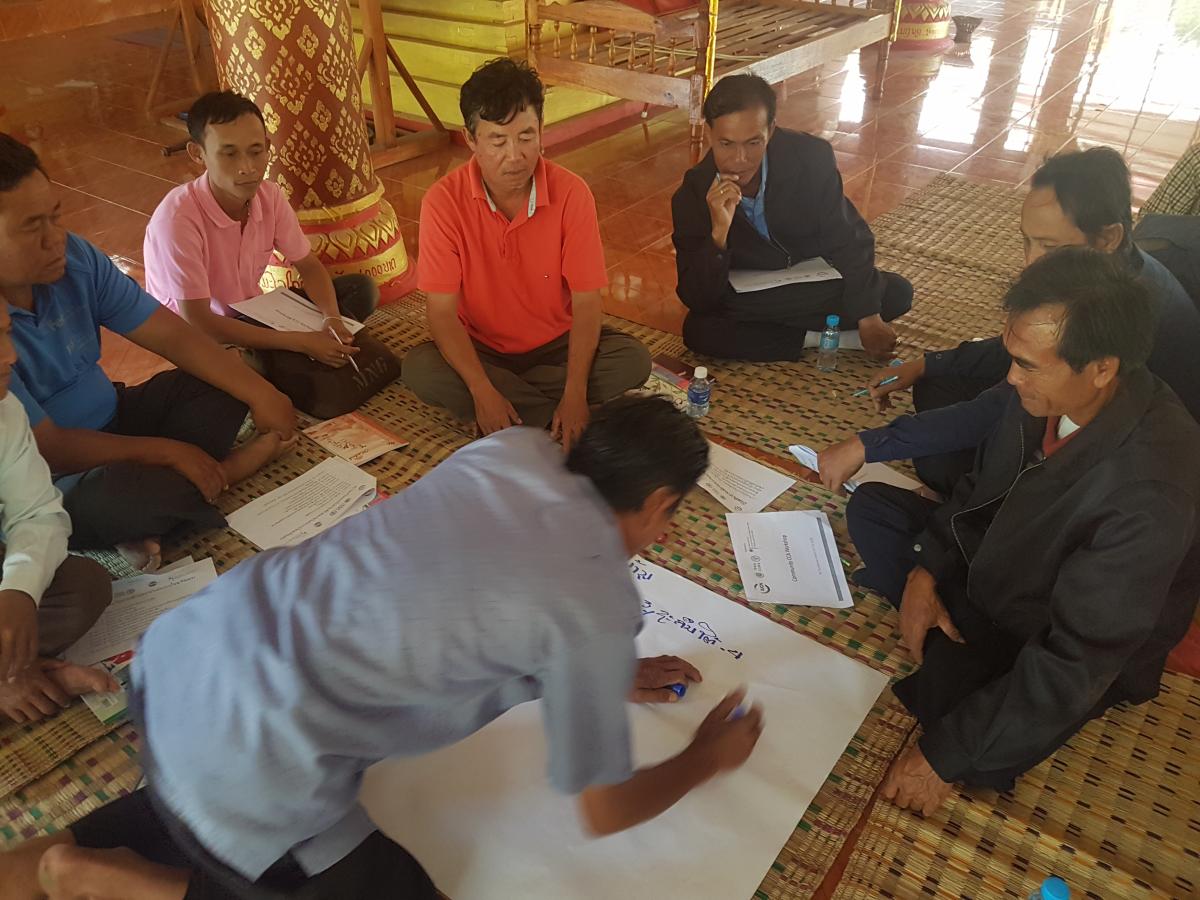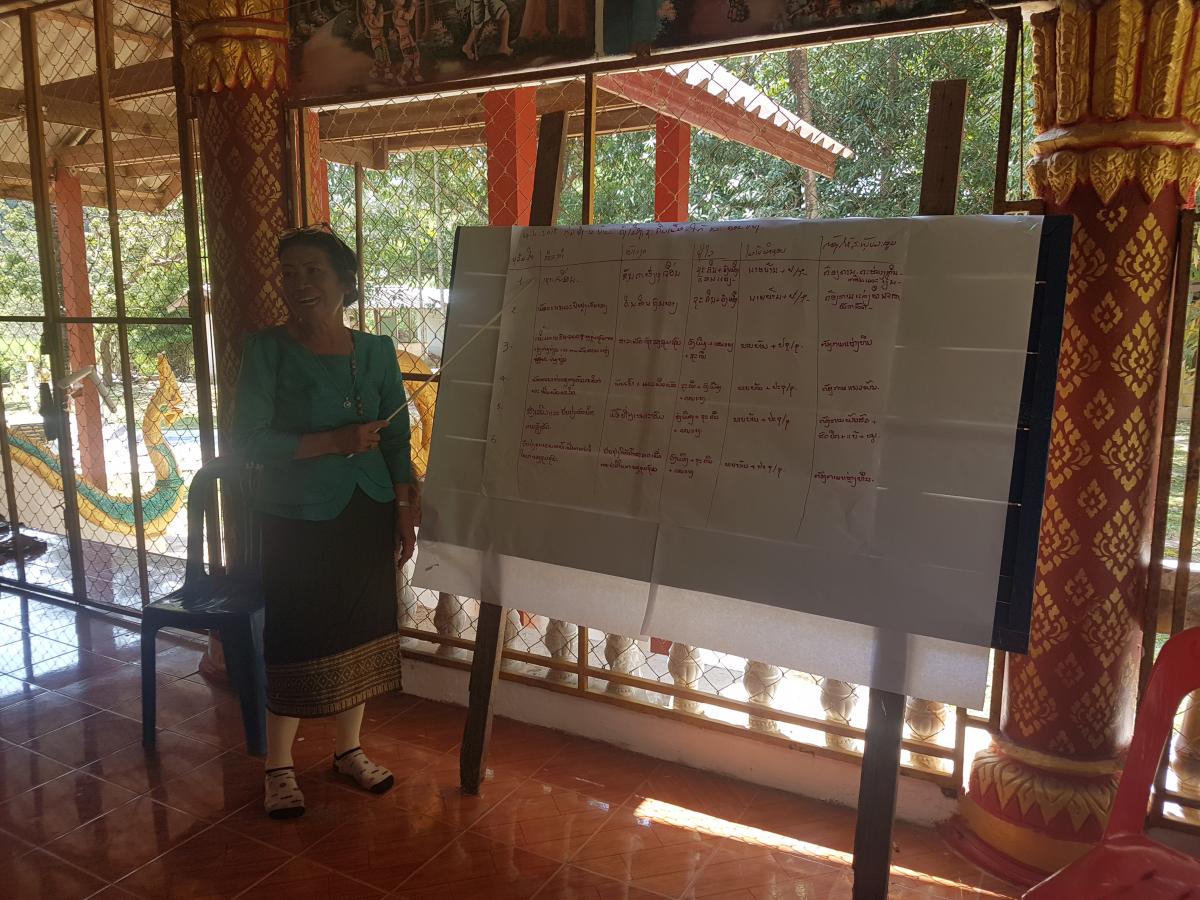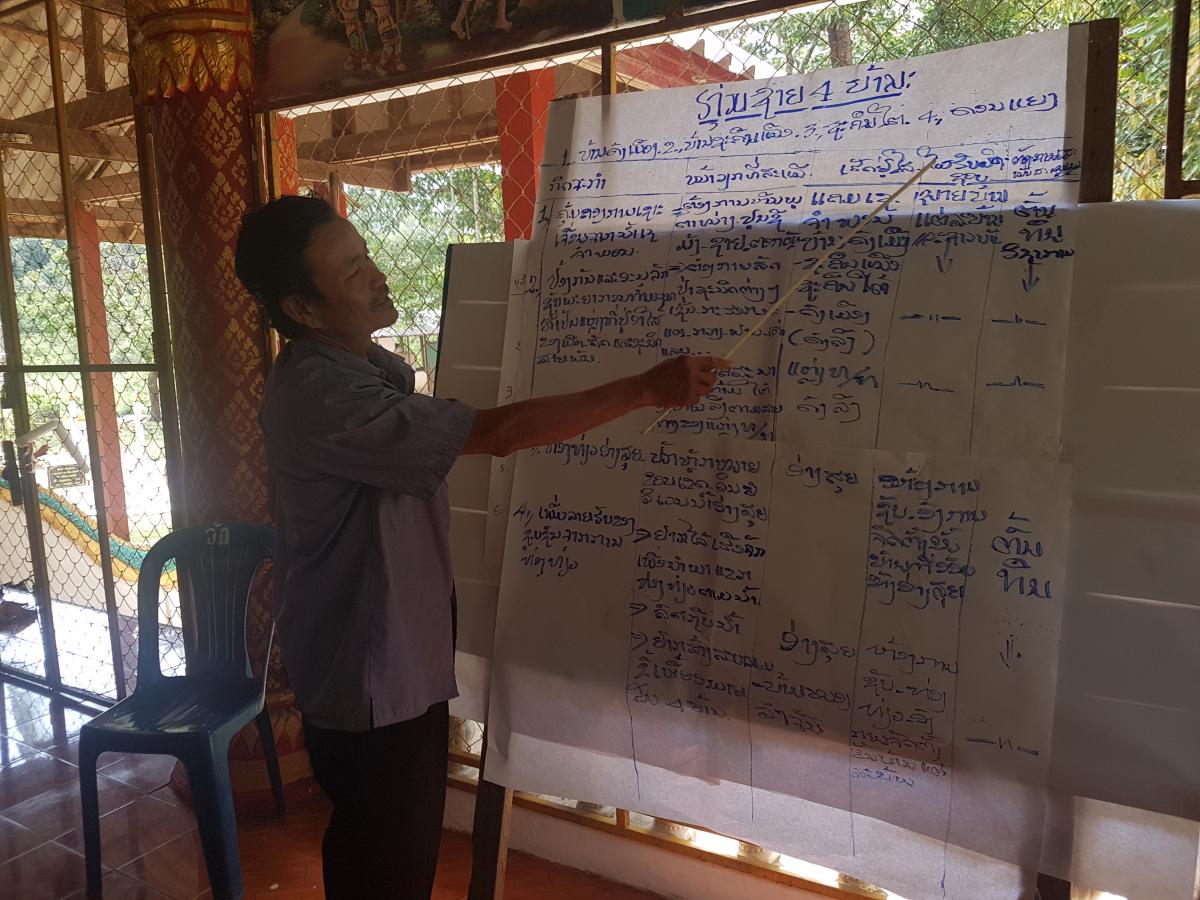Training communities on climate adaptation in wetlands
On 2 October, and 4 to 5 October, IUCN Lao PDR facilitated trainings in the Xe Champhone wetland in Savannakhet Province and Bueng Kiat Ngong (BKN) wetland in Champasak Province, respectively. Both the wetlands are Ramsar sites and these trainings are a part of the Climate Adaptation in Wetlands Areas project. The aim of the trainings was to build communities' capacity in planning for climate change adaptation through ecosystem-based solutions.
The participants of these workshops, including women and village heads were over 100 from 16 villages in the Xe Champhone wetland and 50 from 8 villages in the BKN wetland. The objective of the trainings was to find specific activities that can be done in each village to conserve habitats and species, manage resources while adapting to climate change.These activities will facilitate livelihood adaptation and make sure ecosystems and natural resources continue to thrive even with climate change.
An activity the participants from the BKN site prioritized is training on livestock raising. These trainings will bulid the capacity for participants on how to prevent disease, vaccinate, etc their livestock. The trainings are especially important becuase climate change increases diseases and death for livestock, which is a livelihood for participants. Participants also prioritized training on new rice planting, cultivating and harvesting methods. This includes making flood and drought tolerant rice varieties avilable. This is especially important due to the increase in flooding and drought due to climate change.
Many of the activities the participants from the Xe Champhone wetland prioritized are similar to the ones from the BKN site but due to the problem of embankment erosion from the increased flooding, erosion protection was a major concern. In general community tree planting programs in riparian areas and bank protection was suggested.
Khamphat Xeuasing, Project Field Officer, said “the trainings were a great opportunity to utilize the knowledge of the villagers to find specific activities we can take to adapt to climate change in the wetlands. Over time we are seeing that the loss of livelihoods and biodiversity is happening due to climate change.”
Moving ahead, IUCN will help facilitate the implementation of these activities.
